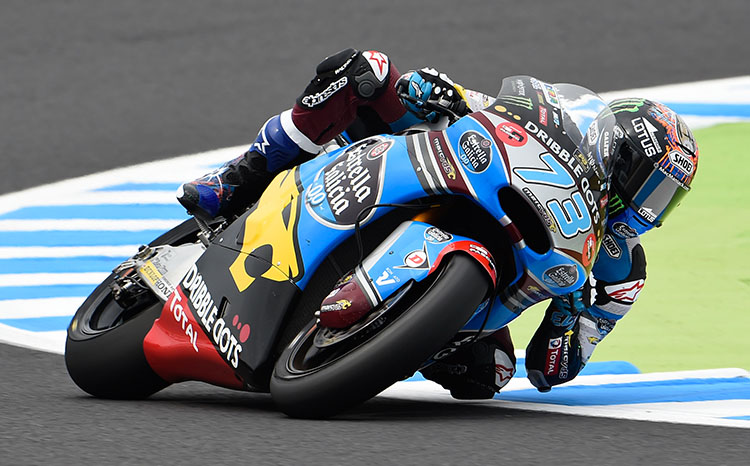Consistent Márquez looking for more pace on fresh tyres
Motegi, Japan – 10 October 2015: Álex Márquez will start tomorrow's Japanese Grand Prix from 15th on the grid after a disappointing qualifying session saw the reigning Moto3 World Champion unable to get the most from his bike on fresh tyres.
The Team Estrella Galicia 0,0 Marc VDS rider was able to set very competitive times on used tyres but with fresh rubber he saw only a small gain in performance. This should allow him to produce a consistent race tomorrow but starting from the fifth row of the grid will make for a challenging day in the competitive intermediate class.
Márquez has steadily improved throughout his rookie Moto2 campaign but in cooler conditions he has consistently struggled to find a balance with the bike with a lack of rear grip causing him problems. With the weather forecast for tomorrow predicting cooler temperatures and a threat of rain, the 21-lap race could be lottery for the 30-rider field.
Alex Marquez: 15th – 1'51.755
“The conditions changed a lot from this morning to this afternoon. Always in these cool conditions we have the same problem with a lack of feeling from the rear. At the end though I think that my lap time with a used tyre, that had done almost a full race distance, was only two tenths slower than a new tyre. We need to understand why this is the case and where we can improve this for tomorrow. The conditions for the race are predicted to be cooler with the possibility of rain. We have had a good feeling in the wet in the past.”
Naoya Kaneko: Chief Mechanic, Álex Márquez
“Qualifying didn't go as we expected because for some reason with a new tyre and fresh grip we couldn't maximise the performance for a better lap time. We need to examine the data and see how we can improve this. The lap time difference between a new tyre and a used tyre isn't very big but definitely with the fresh tyre we haven't been able to use the best performance from the machine. The pace on used tyres is good, but starting from 15th position in Moto2 makes it difficult to catch up.”

